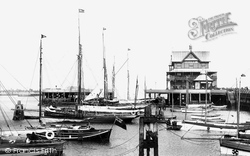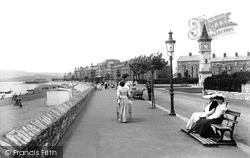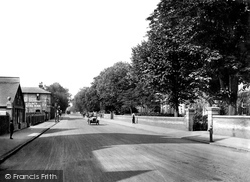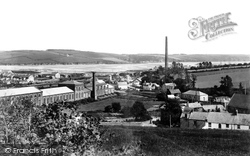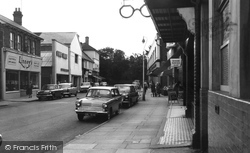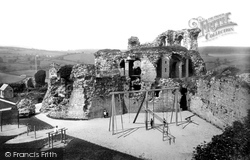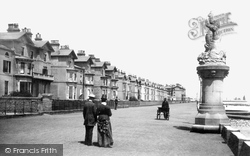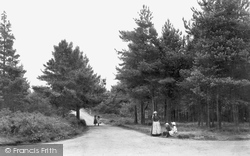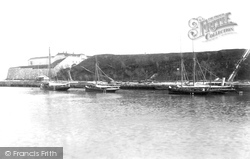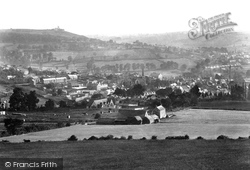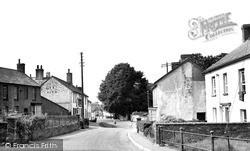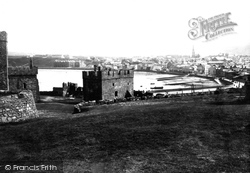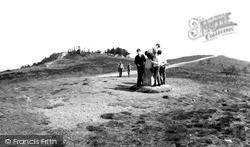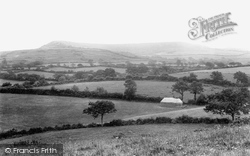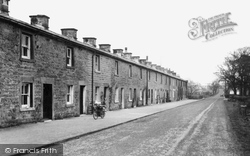Places
24 places found.
Those places high-lighted have photos. All locations may have maps, books and memories.
- Morton, Cumbria (near Carlisle)
- Morton, Lincolnshire (near North Hykeham)
- Morton, Avon
- Morton, Isle of Wight
- Morton, Cumbria (near Hutton End)
- Morton, Norfolk
- Morton Tinmouth, Durham
- Morton, Shropshire
- Morton, Derbyshire
- Morton, Nottinghamshire (near Southwell)
- Morton, Lincolnshire (near Gainsborough)
- Morton, Lincolnshire (near Bourne)
- Morton Bagot, Warwickshire
- Lower Morton, Avon
- Morton Common, Shropshire
- East Morton, Yorkshire
- Upper Morton, Avon
- West Morton, Yorkshire
- Morton Mill, Shropshire
- Morton Mains, Dumfries and Galloway
- Morton Spirt, Hereford & Worcester
- Morton Underhill, Hereford & Worcester
- Abbots Morton, Hereford & Worcester
- Morton-on-Swale, Yorkshire
Photos
17 photos found. Showing results 21 to 17.
Maps
205 maps found.
Books
Sorry, no books were found that related to your search.
Memories
88 memories found. Showing results 11 to 20.
A Wartime Evacuee
During the war I was evacuated with my family to Dunsmore and we lived in Appletree Cottage, opposite The Fox. I attended Wendover School and returned to London in 1946. At the time Robert Donat lived in ...Read more
A memory of Dunsmore in 1940 by
Anyone Remember Newton Street?
My friend used to live in Newton Street, her mum was Mrs Brooks I just sent my friend the Gorton book, I don’t think Newton Street is there any more but someone might remember it. She went to Yew Tree school mid 1940s, ...Read more
A memory of Gorton by
Gorton Girl
I was born in Brook house flats in 1940, then moved to Millwall and then Swindon close Gorton,where I lived with my mum Molly and two sisters known as the Nolan sisters.I loved Belle Vue for dancing and speedway. one of my strongest memories ...Read more
A memory of Gorton by
A Gorton Lad And Proud.
I lived in the Steel Works Tavern Pub, facing The Gorton Tank Works, on the corner of Preston Street and Gorton Lane, from 1953, when I was born. I went to both Peacock Street and St James schools, my name is Geoff Skidmore. I ...Read more
A memory of Gorton by
Summer School Holidays
Those balmy hot summer days on school holidays in the early to mid. 50's. Walking down the lane at the side of Haygate Cemetery, across the Holyhead Road, up Earcall Lane (picking ripe blackberries) to the Forest ...Read more
A memory of Wellington by
Ron Mortons.
Yes, spent many hours in Rons finding bits for the clapped out cars I ran when I was young. Some good memories chatting to other people doing the same thing and we all used to help each other.
A memory of Grinsdale by
More Memories Of Bredbury
I was born at 83 Kingsway in August 1952 at my grandparents' home. My mother was Joan Carter (nee Harrison) who was born in Bennett Street, Ardwick, Manchester and my father was Brian Carter who was born in Rotherfield ...Read more
A memory of Bredbury by
Childhood In Eckington, 1950's 1960's
Myself and my brother were brought up in 50's by our grandparents as mum had died around Xmas '53. School was Camms, we joined the church choir and blessed with a decent voice I became head chorister singing ...Read more
A memory of Eckington by
Corner Cottage. 1950 To Now
My parents moved to Blebo from Dura Den in 1950 when I was six. A windmill for electricity with 12 volt light bulbs. Paraffin lamps and a cesspool. It was several years before the pumping station at Clatto was built ...Read more
A memory of Blebocraigs in 1950 by
Wanted Post Ww1 Photos Of Gorton
Hi, I am asking this from Australia. My mother and two of her siblings were born at No 4 Wellesly Street, Gorton and moved later to No 12 Friendship Ave. Gorton, before migrating to Australia in 1922. Does anybody ...Read more
A memory of Gorton in 1910 by
Captions
46 captions found. Showing results 25 to 48.
The growth of Lowestoft in Victorian times was largely down to construction by the civil engineer Samuel Morton Peto, who lived in nearby Somerleyton Hall.
The view looks towards Morton Crescent and Alexandra Terrace. A century earlier this part of Exmouth was just a strand, backed by dunes, marsh and pasture.
The Infirmary (on the right) was built opposite Coleman & Morton's ironworks - a firm that had specialised in ploughs and cultivators, but closed as a result of the agricultural depression.
The left-hand one – the 'Stafford' – sports its Fellows, Morton & Clayton livery, a company that stopped trading when the canals were nationalised in 1948.
The row of buildings on the left were the Cornwall Mineral Railway's depot, built in 1874 to the design of Sir Morton Peto.
Note, too, the pair of spectacles hanging from the shop on the right; these were the premises of Morton's opticians.
The journalist-cum-explorer Henry Morton Stanley was born John Rowlands in a cottage beneath the castle.
The long range of buildings on the left is the Cornwall Minerals Railway locomotive works, built in 1872-74 by Sir Morton Peto.
South Lowestoft was developed in the 1840s and 1850s by Sir Samuel Morton Peto.
Villager Mrs May Worley Morton recalled that in her childhood she had her first portrait painted beside Watery Lane by the Scottish artist Edwin Alexander.
In the background are Elsie Osman and Rose Morton.
These words by H V Morton sum up the charm of this diminutive city. The cathedral is seen across the magnificent Bishop's Palace built by Henry Gower.
At the time this photograph was taken, the fort on the Nothe was equipped with quick-firing guns, searchlights and accommodation for a battalion of soldiers.
Albert Fort, on the headland at one end of the bay, was built to guard the strategically important waters of the Solent.
Rodborough Fort, on the skyline, now masked by trees, remains an unmistakeable landmark.
The village, thought to date to Saxon times, takes its name from the nearby hill-fort. On the left here is the Maltsters' Arms, still a thriving public house.
Much earlier than that it was a hill fort. One of the region's great landmarks, Ditchling Beacon reaches a height of over 800 feet and is the third highest point on the South Downs.
Magnus Barefoot built a timber fort on St Patrick's Isle in about 1098-1103; the bulk of the surviving fortifications date from the time of Thomas, First Earl of Derby, and were constructed in 1460-1504
Our Iron Age ancestors appreciated the importance of the site and built a hill fort on the top, but it was abandoned when the Romans conquered the region.
This photograph shows the skyline from the profile of Bell Stone (left, top) along to the ramparts of the Iron Age hill-fort on Eggardon Hill (right, top).
Four hundred of these workers combed wool in their homes at Forton, Scorton and Nether Wyresdale.
His was the thought behind the fortresses that were built in the late 1880s on and around Box Hill; there is still a fort on the summit of the hill, a testimony of a war that was never fought.
Places (24)
Photos (17)
Memories (88)
Books (0)
Maps (205)
























